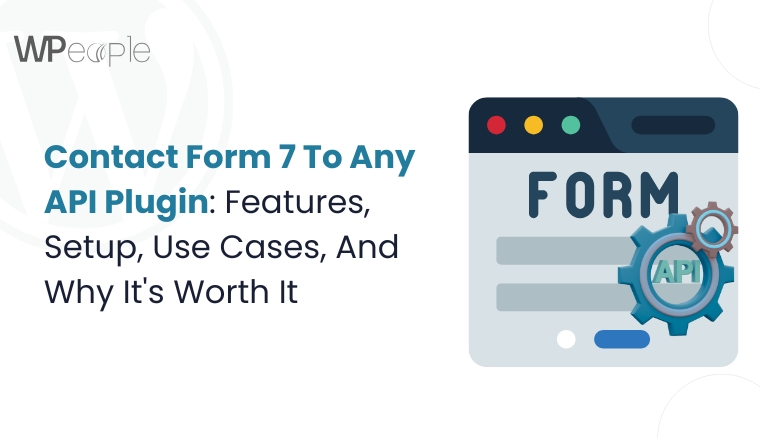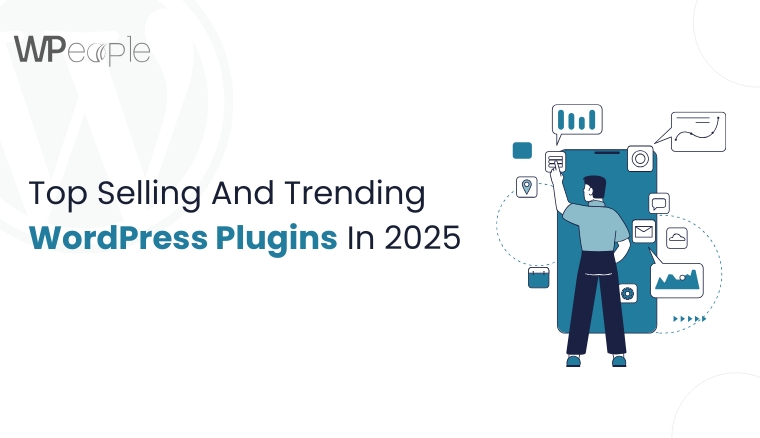
Ever since the world of internet has transformed and evolved so has this website development industry and WordPress has successfully taken up the challenge of growing into a prestigious CMS that helps various users and organizations in establishing their online identity. However, the real potential of the platform is the ability to introduce so-called ‘plugins’ to broaden its functions. Nowadays, the WordPress Plugin Development has turned into one of the core constituents of the wordpress which helps developers to enhance the aspects of the wordpress and its looks or feel according to a specific demand.
What is a WordPress Plugin?
A WordPress plugin can be described as an application that is installed on a WordPress site to extend features, functionality or adjustments. These plugins can range from minor tweaks to largely correct problems in order to help on the advance of the application for WordPress without dealing with the application’s core files. Plugins can be considered to be programs that function inside of WordPress settings as unrelated pieces that are pre-made tools and selections that can be incorporated into a website without additional coding.
Benefits of Developing WordPress Plugins
1. Customization:
Plugins allows you to modify your particular site according to the requirement of certain areas on the WordPress site whether it is a new feature on the site, using a new service or altering the function of the existing one.
2. Scalability:
As your website expands and your own business requirements increase, the WordPress plugin supports the expansion of the site by adding a variety of features as intricate as possible while avoiding changes to the essential WordPress code. It can be described as a method of designing and developing sites in a way that they also expand as your business expands, without having to undergo a swap as growth occurs.
3. Time and Cost Savings:
Plugins on the other hand are off the shelf implementations that can be incorporated easily on the website as opposed to having to build these functionalities from the ground up. This way of creating applications is cost-effective also, by that I mean that it is beneficial now that could help save a lot of time and money that would otherwise be invested in the development of such applications, if needed, for other means of the business or in different projects.
4. Community Support:
The fourth strength because WordPress has a very large group of developers, designers and bloggers who are interested in the program. This is useful to thousands of free or paid plugins, numerous resources, forums, and documents useful for different users who prefer to stay here.
Requirement and Skill for WordPress Plugin Development
Before embarking on the journey of WordPress Plugin Development, it’s essential to have the following prerequisites and skills:However, before paying a venture into WordPress Plugin Security, the following items of necessity and skills needs to be in place.
– Basic PHP, HTML, CSS knowledge:
WordPress relies on the PHP and many plugins contain the PHP to some extent at least, around 90% of WordPress plugins. HTML and CSS are also useful for productive creation of the UI or the styling parts of any plugin that may be used.
– Understanding WordPress Hooks (Actions and Filters):
In general, WordPress hooks are quite elementary on the path of assembling a plugin as they go in several aspects. On the other hand Filters enable you to make changes to values before it is returned or displayed while Actions will enable you to have your code run at some predefined time of the WordPress cycle relative to the cycle . The other key area that you are going to need to accept is hooking because it will assist you to connect your plugin to fundamental operational aspects within WordPress.
– Familiarity with WordPress Codex:
WordPress also has an incorporated utility called the WordPress Codex which is an extensive text reference on the wider World Wide Web for developers. The chances are high that it provides exact but thorough details and detailed guidelines or suggestions concerning WordPress development, or more specifically, plugin development. This is specifically essential when trying to gain an understanding of this Codex, with the aim of using WordPress efficiently.
Step-by-Step Guide to Creating a WordPress Plugin
A WordPress plugin is a piece of software which extends the functionality of the content management system through WordPress migration with other plugins or with the WordPress core program.
1. Planning and Research
– Define plugin purpose and features: In depth research of the problem your plugin will be solving for the target audience and identification of the main features of the plugin and of its functionality. This step helps to make certain that your plugin is going to be unique in its application and is going to address a number of key issues that your audience is going to encounter.
– Review WordPress plugin guidelines: Make sure you are well acquainted with the official guidelines provided by WordPress when it comes to creating plugins to conform to the minimum requirement for submission to the WordPress plugin directory. Ensure your WordPress site runs smoothly with regular maintenance and support. Get help with updates, WordPress security, and troubleshooting These methods involve issues like coding standards, security practices, and documentation.
2. Installing Baserock and Related Project Source Code
– Install a local development environment: To avoid any changes with your site, create a local environment to test your plugin before use. Some of the choices are XAMPP, MAMP or, if you feel up to it, create a virtual machine with, for instance, WordPress installed on a local host.
– Set up a test WordPress installation: To achieve the referred goal, first one must establish an independent WordPress copy, which would be exclusively used for the development and testing purposes. It will provide a quite separate environment within which you can tinker, mess up, and experiment with your plugin before affecting a live site in any way.
3. Creating the Plugin Files
– Naming conventions: Use the following naming conventions for your plugin files and directories as outlined in the illustration: According to WordPress conventions, it is preferred to use the hyphen symbol on the file and directory of the plugin as opposed to the underscore type.
– Required plugin header: This comment contains important information about the plugin that should be immediately visible when a developer opens the plugin to work on it or make changes to it, and includes the plugin name, version number, author name, brief description, any links to the plugin, etc.
4. Writing the Plugin Code
– Using hooks (actions and filters): By using hooks that come with WordPress, you will be accommodating your plugin in the best way possible. Actions can be used to run your own code at a specific time when it intersects with WordPress execution cycle, while filters let you tweak data before it is outputted or processed.
– Adding functionality (shortcodes, widgets, etc. ): If you are implementing custom shortcodes, creating custom widgets, custom post types, integrating with third-party services, etc. , put these aspects here. This is where your plugin’s unique feature manifests itself and where you can build WordPress in ways that can solve various problems.
5. Testing the Plugin
– Local testing environment: Make sure to test your plugin or widget as much as possible in a local environment before launching it for the public to see in a live website. This step is tremendously useful in gettting to know of any defect in your plugin, correct them before any member of the public uses your plugin.
– Debugging techniques: debug the application by using methods like, error logging that involves reporting errors, wordpress debug mode, and code profiling in case of encountering any complications in the testing phase. Most of these tools will assist you in coming up with a schedule that addresses current or emerging issues effectively.
6. Distributing the Plugin
– Submitting to WordPress. org directory: If your intention is to deploy your plugin publicly, then you can consider hosting your plugin within the WordPress plugin repository after forgoing necessary procedures and checks. This is actually a directory to where WordPress plugins are located and where they get exposure with the many end users.
– Self-hosting the plugin: In case, the decisions are to host your plugin yourself on your website or to distribute it to select clients or users only. This mode is helpful especially when creating distinct plugins that one would design to suit a particular project or client.
Best Practices
To ensure the quality and long-term maintainability of your WordPress Plugin Development, it’s essential to follow industry best practices.
– Coding standards: Setting and following the WordPress Coding Standards ensures that a system of organizing code is followed to make it readable. This practice helps others who wish to use your plugin or contribute to its future development to assimilate your code, cooperating with you.
– Security considerations:
Ensure that there are proper protective measures to ensure that your plugin as well as users of this plugin are safe for some vulnerabilities that may come up in future. These can include measures like removing input data and its unwanted tags, as well as eliminating the possibilities of codes like cross-site scripting, or SQL injection.
– Performance optimization:
Improve the performance of your plugin by preventing wastage of resources, the use of cache, and other practices that have to do with greatness in WordPress. A good plugin is one that is designed in a manner that does not slow down the environment in which it is being run or operated in, and responds in a clean manner to the various user interactions.
– Proper documentation:
Try and detail as possible implementing features of the plugin along with its usage and any technical information that may be useful. Stating things clearly and providing much detail helps others who use your plugin to understand and respond to it and other developers who wish to extend it or possibly take it over in the future.
– Regular updates:
Always follow up your plugin for bug check, security purposes, and to account for new versions of WordPress. By updating your plugin, this makes it less likely to be open to deadly security vulnerabilities while making it stable and improved for compatibility with the most recent WordPress versions, hence, causes fewer troubles to the users.
Conclusion
WordPress Plugin Development introduces the reader to the vast potential of WordPress plugins, which can be deemed as supplementary applications with indefinite possibilities for expanding and enriching WordPress sites. Thus, plugins also allow for the development of specific solutions that tackle your own conditions and offer an improved interface. Regardless of how you are involved with WordPress, be it as a developer or a blogger, as an owner of an e-commerce site or as a WordPress development company, the knowledge of WordPress Plugin Development brings new ideas to the table and opens new horizons.
Please bear in mind that to build a standard WordPress Security, one needs to lay down good strategies, follow required conventions and refrain from skipping out on future plugin updates and maintenance. By adhering to the practices presented in this guide and leveraging conventional approaches in the WP development market , you will be able to support the WP ecosystem and offer useful tools to the community.
Thus, with increasing customer expectations for tailored services, the demand for WordPress maintenance Service providers and woocommerce plugin development specialists become highly valued in maintaining the sustainability and stability of WordPress installations across diverse niches. In this aspect, one can be in a good stead to be well informed in the latest trends and technologies in the WordPress realm in order to meet the dynamic aspects of the web development industry.
Through the appreciation of WordPress Plugin Development, you are sure to extend the functionality of any WordPress-based site to the limit that will help meet the specific needs of users.
Consult with Our WordPress Experts On:
- WooCommerce Store
- Plugin Development
- Support & maintenance




